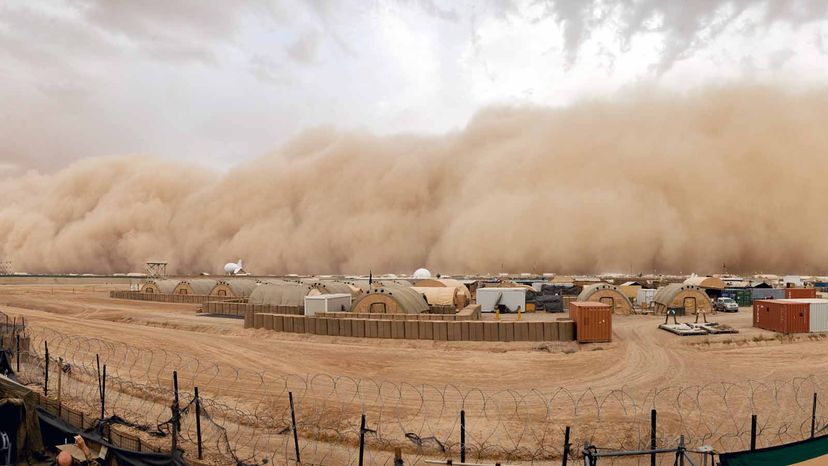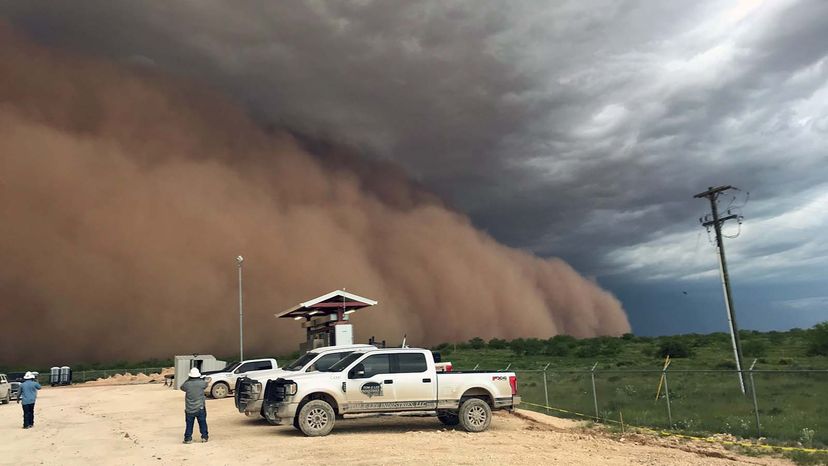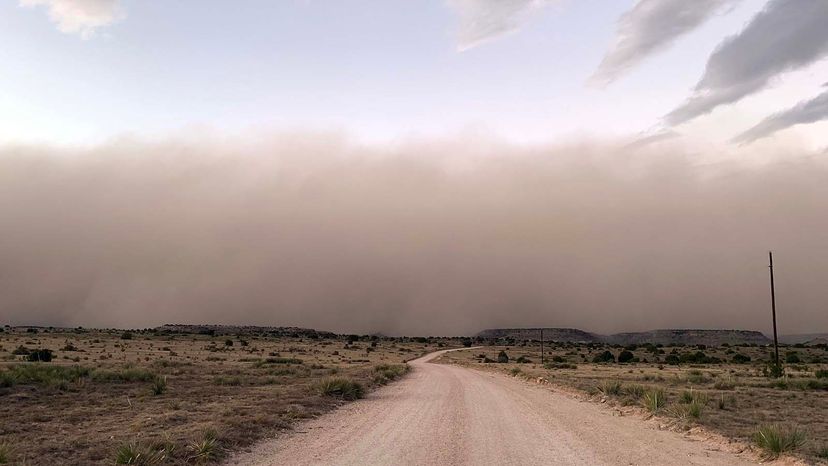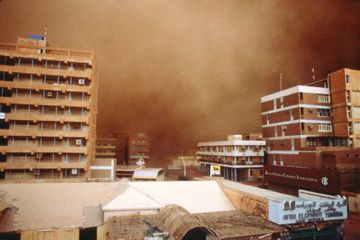
Key Takeaways
- Haboobs are intense dust storms characterized by strong winds carrying a wall of dust and debris.
- These storms typically occur in arid regions, particularly during the summer months, and can pose significant hazards to transportation, health and infrastructure.
- Haboobs are often associated with thunderstorms or strong gust fronts and can cause reduced visibility, respiratory issues and property damage.
It was a sight to behold — one of the most incredible AccuWeather storm chaser Reed Timmer had ever witnessed up to that point in July 2018. A massive mile-high wall of dust was barreling toward afternoon commuters along Arizona interstates 17 and 8 near Phoenix. The ominous burnt-red curtain packed hurricane-force wind gusts, hail and torrential rains, choking rush hour traffic in near-zero visibility as it made its way westward.
Dust storms are not unusual in the arid desert of southwest Arizona. But this one? Veteran Arizona storm chaser Mike Olbinski tweeted was "probably [one of the] top two haboobs I've ever chased."
Advertisement
A hah-what?
If you're not from the Southwest (or live along a huge desert like the Sahara or Arabian Peninsula), chances are you've never heard the word. Haboobs (pronounced hah-boob) are particularly intense types of dust and/or sandstorms that envelop areas for relatively short periods of time, typically 30 minutes or less.
"They're caused by the small scale, but intense, processes of thunderstorms and the resulting winds," says Dave Houk, senior meteorologist with AccuWeather. Comparatively, "the more common 'dust storm' is generally driven by large scale winds with strong low- and high-pressure systems and is less sudden and not as intense but can be longer in duration."
These humongous dirt blogs are more likely to occur during the summer monsoon season in the Southwest U.S. as well as across North Africa and the Middle East. Places like Phoenix, Arizona, average several haboobs each year but they are far more common in Sudan in the Sahara Desert, Houk says.
Unlike many other meteorological terms with strict scientific definitions based on measurable characteristics — such as those that discern a tropical storm from a hurricane — with haboobs, there is no strict set of rules that lead to a scientific classification.
However, Houk says, "There are characteristics, though, that lead meteorologists to call it a 'haboob.'"
Advertisement


